Glossary
Plant Care Library
I
Iresine Herbstii Aureoreticulata
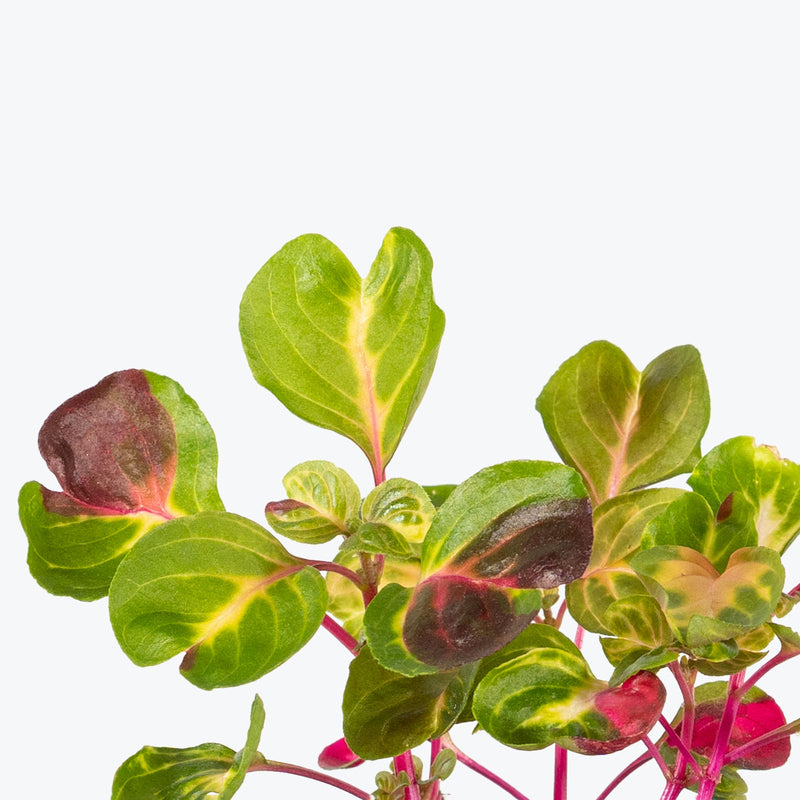
How to care for Iresine Herbstii Aureoreticulata
Iresine Herbstii Aureoreticulata enjoys some direct sun, but they'll also do well in bright, indirect light. It is best to place this plant somewhere where it will receive some nice morning sun, or a couple hours of afternoon sun, and then indirect light the rest of the day.
Iresine Herbstii Aureoreticulata will do best in bright light. A nice bright place inside your home would be on the window sill or a stool that is right next to a window, either with or without blinds, depending on if the plant can handle sun. Remember that plants will grow based on how much light they receive.
Iresine Herbstii Aureoreticulata needs to be watered when the top half of the soil is dry to the touch. That usually takes about 1 week in an average home environment. It will vary depending on the time of year, your environment and lighting conditions, but it's always safer to underwater or give the soil a check before you water again. Expect to water more often in brighter light and less often in lower light.
Iresine Herbstii Aureoreticulata will do well in average humidity environments but will appreciate a little bit of humidity if provided, give them a mist daily or get a humidifier.
Although Iresine Herbstii Aureoreticulata can handle medium humidity levels, they do require warmth, but keep them away from drafts! They can start to get a little droopy when they are thirsty but try to avoid letting them get excessively dry because this can lead to leaf loss and brown edges. To encourage healthy leaf growth, prune your plant back in the spring when it starts to get too tall, this will also encourage business. If it starts to get too leggy, this means your plant is not receiving enough light.
You can feel comfortable having Iresine Herbstii Aureoreticulata around your home in the potential case where your pet feels like nibbling on it. However, we typically recommend keeping your pets from eating any of your houseplants..
View PlantIresine Herbstii Brilliantissima
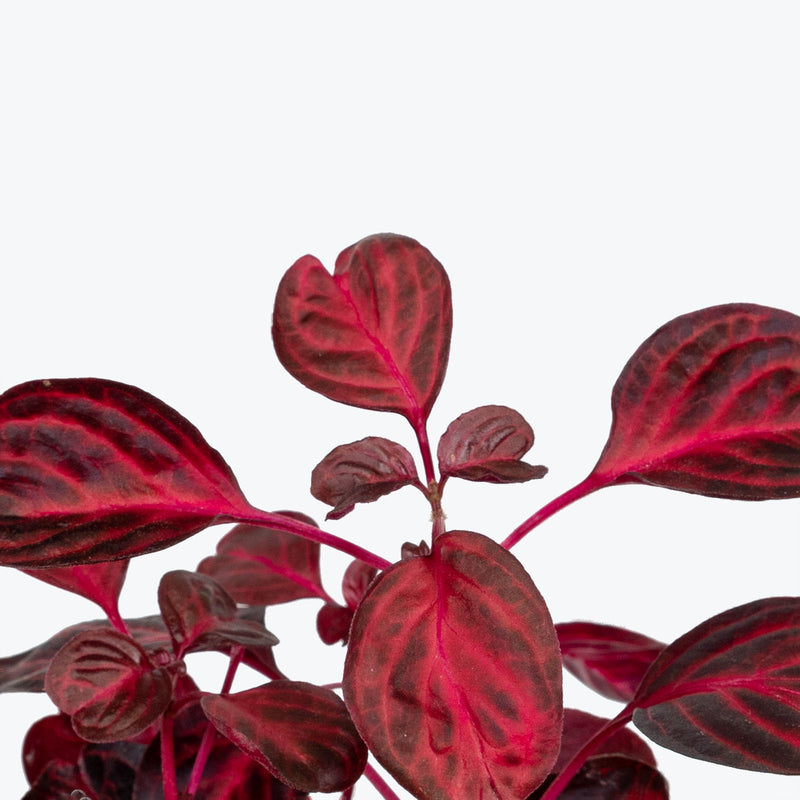
How to care for Iresine Herbstii Brilliantissima
Iresine Herbstii Brilliantissima enjoys some direct sun, but they'll also do well in bright, indirect light. It is best to place this plant somewhere where it will receive some nice morning sun, or a couple hours of afternoon sun, and then indirect light the rest of the day.
Iresine Herbstii Brilliantissima will do best in bright light. A nice bright place inside your home would be on the window sill or a stool that is right next to a window, either with or without blinds, depending on if the plant can handle sun. Remember that plants will grow based on how much light they receive.
Iresine Herbstii Brilliantissima needs to be watered when the top half of the soil is dry to the touch. That usually takes about 1 week in an average home environment. It will vary depending on the time of year, your environment and lighting conditions, but it's always safer to underwater or give the soil a check before you water again. Expect to water more often in brighter light and less often in lower light.
Iresine Herbstii Brilliantissima will do well in average humidity environments but will appreciate a little bit of humidity if provided, give them a mist daily or get a humidifier.
Although Iresine Herbstii Brilliantissima can handle medium humidity levels, they do require warmth, but keep them away from drafts! They can start to get a little droopy when they are thirsty but try to avoid letting them get excessively dry because this can lead to leaf loss and brown edges. To encourage healthy leaf growth, prune your plant back in the spring when it starts to get too tall, this will also encourage business. If it starts to get too leggy, this means your plant is not receiving enough light.
You can feel comfortable having Iresine Herbstii Brilliantissima around your home in the potential case where your pet feels like nibbling on it. However, we typically recommend keeping your pets from eating any of your houseplants..
View PlantItalian Honey Fig
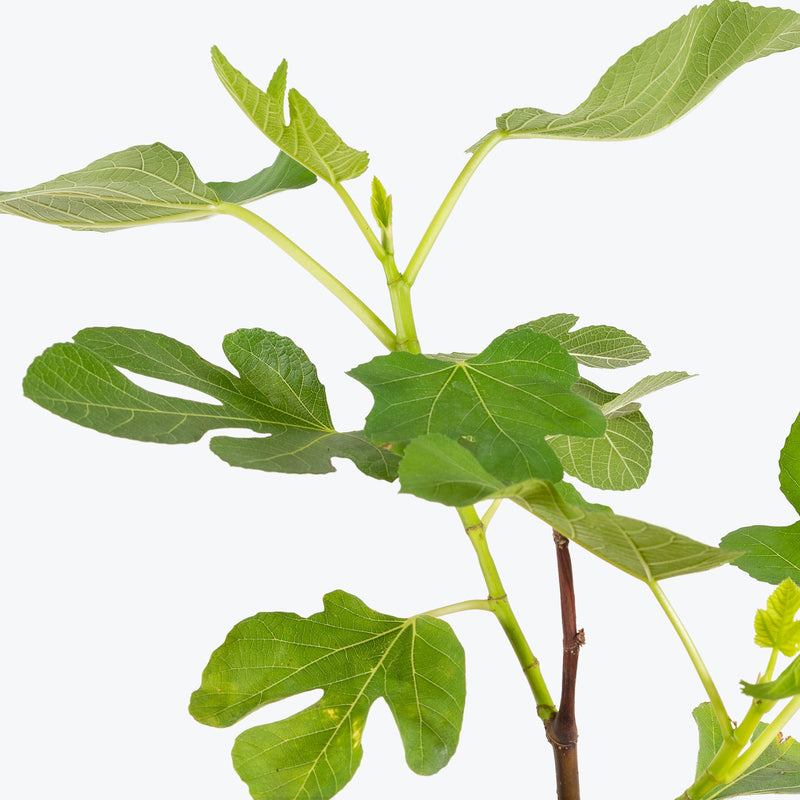
How to care for Italian Honey Fig
They love as much sun as possible during the growing season. The best spot for them is where they can see the sun during the majority of the day.
They will do best in bright light. A nice bright place inside your home would be on the window sill or a stool that is right next to a window, either with or without blinds, depending on if the plant can handle sun. Remember that plants will grow based on how much light they receive.
Allow the top quarter of the soil to dry before watering again. This usually takes about 3 - 4 days in an average home environment. It will vary depending on the time of year, your environment, whether the plant is outdoors or not, and lighting conditions. Expect to water more often in brighter light and less often in lower light. If you let the tree dry out too much, the stress may cause it to lose its leaves or lessen fruit production. When fruit begins to form, be sure to provide the tree with adequate water to promote juicy, plump fruit. Never let a plant sit in standing water.
They will do well in average humidity environments but will appreciate a little bit of humidity if provided, give them a mist daily or get a humidifier.
Use a foliar spray (fertilizer for the foliage) or diluted liquid seaweed mix each month for healthy growth and lots of fruit. They need to go through a dormant period each fall/winter, where they lose their leaves, and then they will go through two crops each spring/summer. Once the plant has lost its leaves in the fall, remove any fruits left on the plant that are bigger than a pea, but leave the rest on the plant, these will grow the following spring and be the first crop. During the winter, place the dormant plants in an unheated garage, or basement, where you can protect them from cold temperatures. Stop fertilizing at this time, but you should continue watering them, allowing the soil surface to dry between watering.
This plant is moderately toxic and can cause some adverse reactions when ingested so it is best to not let your pets eat it, which we advise for all plants in general. The severity of the reaction will depend on how much of the plant is ingested but, if you know your pet typically does not eat your plants, this plant will be suitable for your home..
View PlantIvy Gold Dust
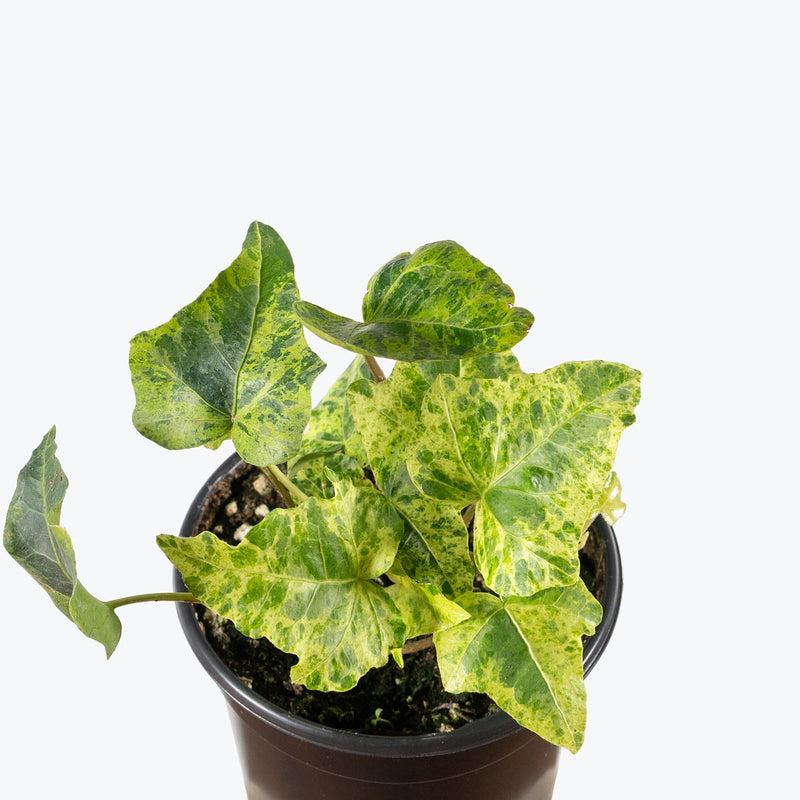
How to care for Ivy Gold Dust
Ivy Gold Dust should not be in a position to see the sun directly, although early morning or late evening sun is fine. Filtered sunlight through a sheer curtain is best and most homes are comprised primarily of indirect sunlight. The best spot for them is where they do not see the sun during the majority of the day but still get bright, indirect light.
Ivy Gold Dust will thrive in bright light, but also can tolerate medium light. A good medium-light place in your home would be in the middle of a room that has a regular size window. They can be placed anywhere between the middle of the room and the window. Remember that plants will grow based on how much light they receive.
Ivy Gold Dust needs to be watered when the top half of the soil is dry to the touch. That usually takes about 1 week in an average home environment. It will vary depending on the time of year, your environment and lighting conditions, but it's always safer to underwater or give the soil a check before you water again. Expect to water more often in brighter light and less often in lower light.
Ivy Gold Dust can live in any average home humidity condition and are fairly hardy.
To keep the gold variegation bright and defined, place Ivy Gold Dust in bright, indirect light — lower light can cause the yellow tones to fade. It prefers cooler indoor temperatures and should be planted in well-draining soil. Prune regularly to shape or prevent legginess. This ivy is ideal for training along trellises, trailing from shelves, or forming neat mounds in containers. It's relatively low-maintenance and can tolerate occasional dryness once established.
Ivy Gold Dust is moderately toxic and can cause some adverse reactions when ingested so it is best to not let your pets eat it, which we advise for all plants in general. The severity of the reaction will depend on how much of the plant is ingested but, if you know your pet typically does not eat your plants, this plant will be suitable for your home..
View PlantIvy Golden Ingot
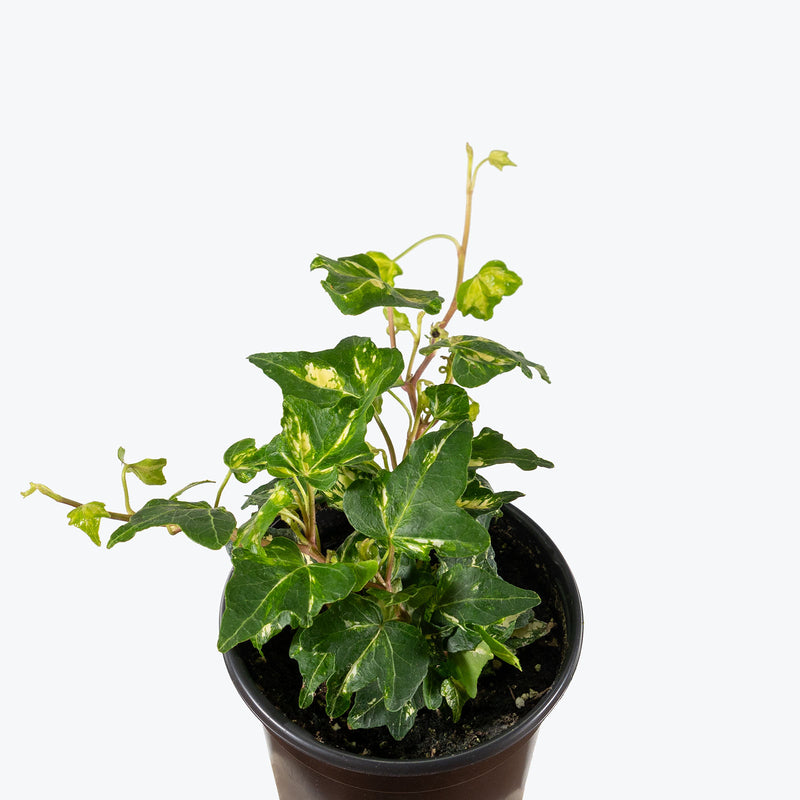
How to care for Ivy Golden Ingot
Ivy Golden Ingot should not be in a position to see the sun directly, although early morning or late evening sun is fine. Filtered sunlight through a sheer curtain is best and most homes are comprised primarily of indirect sunlight. The best spot for them is where they do not see the sun during the majority of the day but still get bright, indirect light.
Ivy Golden Ingot will thrive in bright light, but also can tolerate medium light. A good medium-light place in your home would be in the middle of a room that has a regular size window. They can be placed anywhere between the middle of the room and the window. Remember that plants will grow based on how much light they receive.
Ivy Golden Ingot needs to be watered when the top half of the soil is dry to the touch. That usually takes about 1 week in an average home environment. It will vary depending on the time of year, your environment and lighting conditions, but it's always safer to underwater or give the soil a check before you water again. Expect to water more often in brighter light and less often in lower light.
Ivy Golden Ingot can live in any average home humidity condition and are fairly hardy.
For the most vibrant variegation, place Ivy Golden Ingot in a spot with bright, indirect light and cooler temperatures. Prune lightly to maintain shape and encourage fuller growth. It’s excellent in containers, hanging baskets, or as a small-scale groundcover. Unlike more aggressive ivy types, this variety is easy to manage indoors or out and responds well to training on small trellises or topiaries. Fertilize monthly in spring and summer to support healthy colour and steady growth.
Ivy Golden Ingot is moderately toxic and can cause some adverse reactions when ingested so it is best to not let your pets eat it, which we advise for all plants in general. The severity of the reaction will depend on how much of the plant is ingested but, if you know your pet typically does not eat your plants, this plant will be suitable for your home..
View PlantIvy Marengo
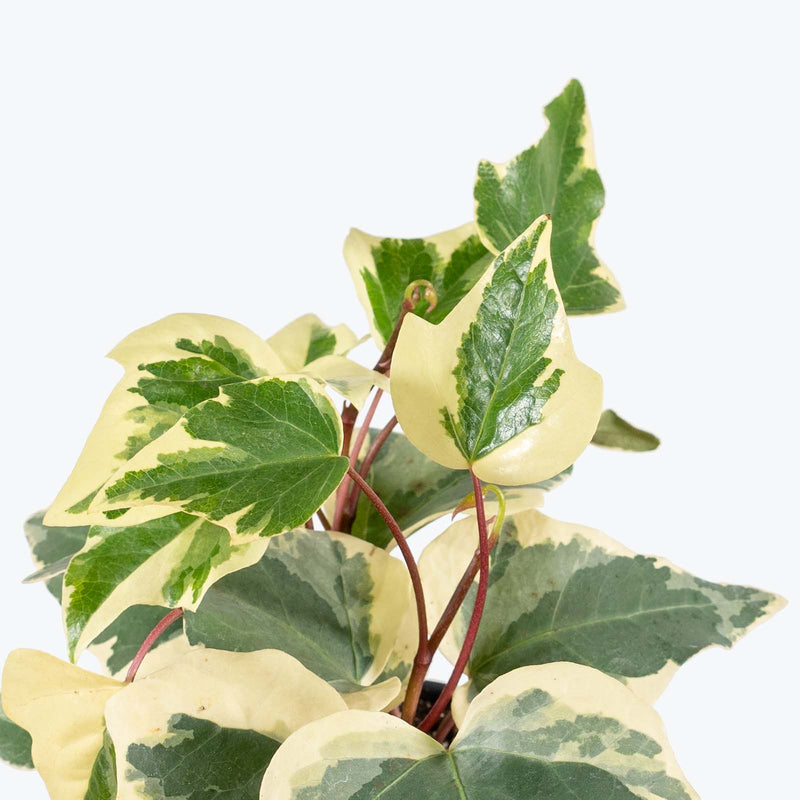
How to care for Ivy Marengo
They should not be in a position to see the sun directly, although early morning or late evening sun is fine. Filtered sunlight through a sheer curtain is best and most homes are comprised primarily of indirect sunlight. The best spot for them is where they do not see the sun during the majority of the day but still get bright, indirect light.
They will do well in medium light but will grow faster with brighter light. A good medium-light place in your home would be in the middle of a room that has a regular size window. Remember that plants will grow based on how much light they receive.
They like the soil to be relatively dry before the next watering. That usually takes about 2 weeks in an average home environment. It will vary depending on the time of year, your environment and lighting conditions, but for them, it's always safer to underwater or water when you see signs of lack of water (i.e. droopy, floppy, or soft leaves). Water more often in the warmer months.
They will do well in average humidity environments but will appreciate a little bit of humidity if provided, give them a mist daily or get a humidifier.
Feel free to trim up long runners and repot them back into your plant to keep it looking bushy and full. Use sharp, clean scissors and carefully cut just below a leaf node, then remove the leaf at that node and plant that part of the stem, as that is where the roots will form.
This plant is moderately toxic and can cause some adverse reactions when ingested so it is best to not let your pets eat it, which we advise for all plants in general. The severity of the reaction will depend on how much of the plant is ingested but, if you know your pet typically does not eat your plants, this plant will be suitable for your home..
View PlantIvy White Wonder
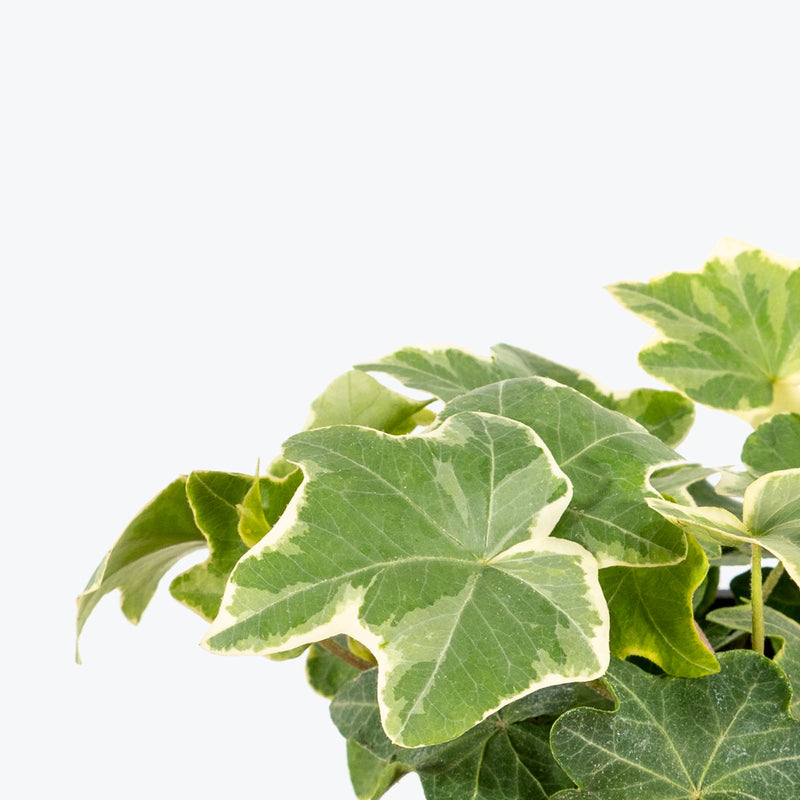
How to care for Ivy White Wonder
They should not be in a position to see the sun directly, although early morning or late evening sun is fine. Filtered sunlight through a sheer curtain is best and most homes are comprised primarily of indirect sunlight. The best spot for them is where they do not see the sun during the majority of the day but still get bright, indirect light.
They will do well in medium light but will grow faster with brighter light. A good medium-light place in your home would be in the middle of a room that has a regular size window. Remember that plants will grow based on how much light they receive.
They like the soil to be relatively dry before the next watering. That usually takes about 2 weeks in an average home environment. It will vary depending on the time of year, your environment and lighting conditions, but for them, it's always safer to underwater or water when you see signs of lack of water (i.e. droopy, floppy, or soft leaves). Water more often in the warmer months.
They will do well in average humidity environments but will appreciate a little bit of humidity if provided, give them a mist daily or get a humidifier.
Feel free to trim up long runners and repot them back into your plant to keep it looking bushy and full. Use sharp, clean scissors and carefully cut just below a leaf node, then remove the leaf at that node and plant that part of the stem, as that is where the roots will form.
This plant is moderately toxic and can cause some adverse reactions when ingested so it is best to not let your pets eat it, which we advise for all plants in general. The severity of the reaction will depend on how much of the plant is ingested but, if you know your pet typically does not eat your plants, this plant will be suitable for your home..
View PlantIvy Wonder
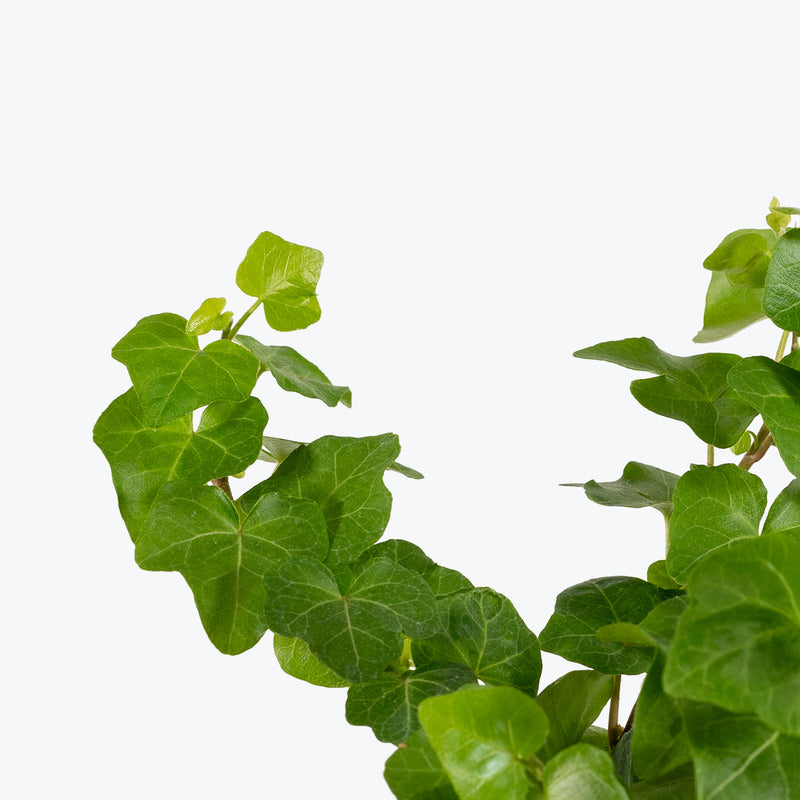
How to care for Ivy Wonder
They should not be in a position to see the sun directly, although early morning or late evening sun is fine. Filtered sunlight through a sheer curtain is best and most homes are comprised primarily of indirect sunlight. The best spot for them is where they do not see the sun during the majority of the day but still get bright, indirect light.
They will do well in medium light but will grow faster with brighter light. A good medium-light place in your home would be in the middle of a room that has a regular size window. Remember that plants will grow based on how much light they receive.
They like the soil to be relatively dry before the next watering. That usually takes about 2 weeks in an average home environment. It will vary depending on the time of year, your environment and lighting conditions, but for them, it's always safer to underwater or water when you see signs of lack of water (i.e. droopy, floppy, or soft leaves). Water more often in the warmer months.
They will do well in average humidity environments but will appreciate a little bit of humidity if provided, give them a mist daily or get a humidifier.
Feel free to trim up long runners and repot them back into your plant to keep it looking bushy and full. Use sharp, clean scissors and carefully cut just below a leaf node, then remove the leaf at that node and plant that part of the stem, as that is where the roots will form.
This plant is moderately toxic and can cause some adverse reactions when ingested so it is best to not let your pets eat it, which we advise for all plants in general. The severity of the reaction will depend on how much of the plant is ingested but, if you know your pet typically does not eat your plants, this plant will be suitable for your home..
View Plant



